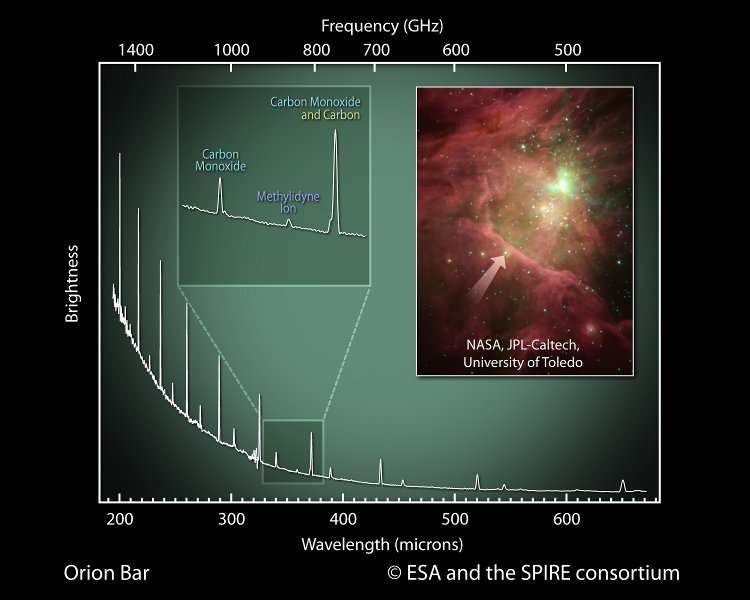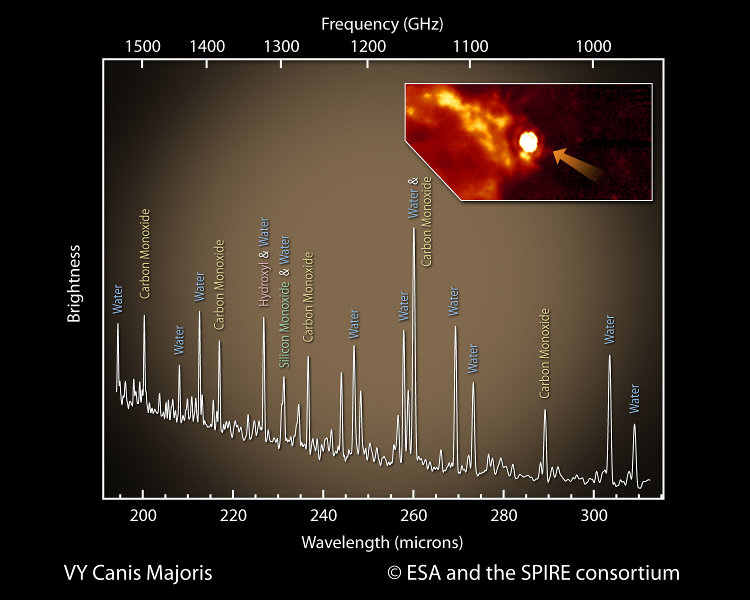Spectrometers on board all three Hershel instruments have been used to analyse the light from objects inside our galaxy and from other galaxies, producing some of the best measurements yet of atoms and molecules involved in the birth and death of stars. This includes the first results from the SPIRE Fourier Transform Spectrometer (FTS), which covers th whole submillimetre wavelength range from 194 to 672 microns. The SPIRE FTS will be invaluable to astronomers in determining the composition, temperature, density and mass of interstellar material in nearby galaxies and in star-forming clouds in our own galaxy.
Professor Keith Mason, Chief Executive of the Science and Technology Facilities Council (STFC), which provides the UK funding for Herschel, said “Herschel has once again returned some spectacular indications of what is to come. This wealth of new data exists because of the dedication and skill of the scientists working on this project and will vastly expand our knowledge of the life cycle of stars”.
Professor Matt Griffin of Cardiff University, who is the SPIRE Principal Investigator, said: “Some trial observations have been made during initial testing of the spectrometer, and it is clear that the data are of excellent quality, and even these initial results are very exciting scientifically, especially our ability to trace the presence of water throughout the Universe. The spectrometer was technically very challenging to build, and the whole team is delighted that it works so well”.
Professor Glenn White, of the Open University and STFC’s Rutherford Appleton Laboratory, and an expert in the field of molecular astronomy for which the SPIRE spectrometer is designed, said: “The exquisite sensitivity and quality of these early data reveal spectacular spectroscopic signatures that show the diversity and complexity of the birth processes common to the formation of star and planets. Herschel is going to help us trace the evolution and life of stars, to map the chemistry in our galactic neighbourhood, and allow us to detect water and complex molecules in distant galaxies”.
Professor Mike Barlow of University College London, who will use the SPIRE instrument to study the material ejected into space by stars near the end of their lives, said: “The unprecedented spectral range and the wealth of detail revealed by the SPIRE spectrometer, in a hitherto almost unexplored region of the spectrum, promises to revolutionise our understanding of the formation of molecules and dust particles during the final stages of the lives of stars. These dust particles go on to play a crucial role in the formation of new stars and provide the raw material for the planetesimals and planets that form around them”.
SPIRE images

Image credits: ESA/Herschel/SPIRE “Nearby Galaxies” consortium and NASA/ESA/STSci (inset). 
mage credits: ESA/Herschel/SPIRE “Nearby Galaxies” consortium 
Image credits: ESA/Herschel/SPIRE “Evolution of Interstellar Dust” consortium and NASA/Spitzer (inset). 
Image credits: Herschel/SPIRE “MESS” consortium.
